With a harmonious blend of modern touches and a rich historical past, Beijing is China’s heart, which has evolved at every corner. For history, archeology, or food buffs, the city is bursting with adventure, waiting to unfold. Stunning views covered under the blanket of rich heritage are in every part of the city. This article is designed to help travelers plan their trip to this beautiful city packed with culture. As you prepare for the journey, you will also learn about the finest places to eat in the town in 2025. Whether this is your first visit or your one-hundredth time, after reading the article, you will have the means to tailor your adventure to fit your desires.
What Are the Must-See Attractions in Beijing for First-Time Visitors?
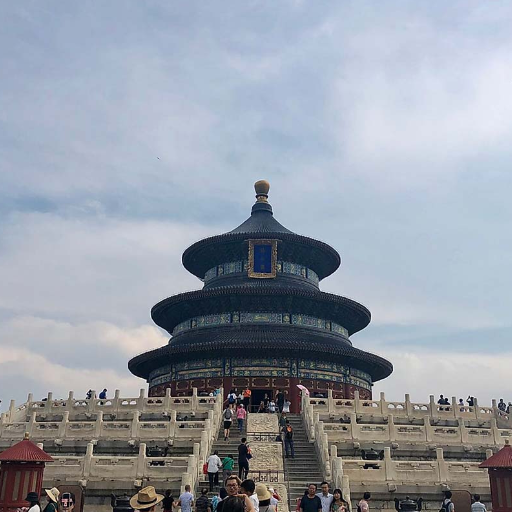
Exploring the Magnificent Forbidden City and Its Imperial History
The impressive feature known as The Forbidden City brings ancient imperial history to life in all its glory. As I made my way through the courtyards and halls, I experienced many different emotions brought on by the exquisiteness of the architecture. This breathtaking site was home to 24 emperors during the Ming and Qing dynasties, and every inch of the complex demonstrates the incredible attention to detail and cultural importance of this period. For first-time visitors, I suggest enjoying the highlights, which include the Meridian Gate, The Hall of Supreme Harmony, and the Imperial Garden, all stunning in their own right.
The impressive size of the Forbidden City is sixty times that of the average palace in Western countries. It covers 180 acres and is filled with nearly 980 architectural wonders, so walking aids such as good shoes are a necessity. Moreover, I recommend adequately planning your time; a minimum of three hours is needed to explore the main parts properly and still have time to spare. Before diving into this astonishing work of art, consider coming in during the early hours or weekdays to reap the benefits of lowered crowds.
Why Visiting the Great Wall at Mutianyu Section Offers the Best Experience
Exploring the Great Wall at the Mutianyu section offers visitors one of the best and most thrilling experiences. In my opinion, this part has beautiful views, spacious greenery, well-maintained buildings, and ease of accessibility, which makes it popular among tourists. Mutianyu is famous for its rich greenery and gorgeous mountains that create a peaceful and picturesque environment throughout the year, whether during spring with its unmatched colors or autumn when the leaves turn into golden shades. It also receives lesser footfall than other sections. For example, the Badaling region is more crowded than Mutianyu, which takes the charm out of truly experiencing this historical splendor.
The effectiveness of its preservation marks the differentiation of this section. The walls and watchtowers of the Mutianyu section are restored, so it is safe and genuine to experience the Great Wall. Within the 2.5-kilometer stretch of the wall, there are 23 watchtowers to examine, which provide different views of the surroundings. It is built with large granite slabs, giving the wall sturdy durability and reflecting the skills of the ancient builders. The path also possesses some steeper portions, though certain sections provide relatively gentle slopes, making it accessible yet challenging. Because of this, casual walkers and serious hikers are both accommodated.
Accessibility is also another aspect of my recommendation for Mutianyu. Visitors can access the wall using a modern cable car system, meaning they do not have to exert effort against a steep slope initially. Those who prefer some level of excitement can toboggan back down. Moreover, Mutianyu offers shuttles and private tour options in central Beijing, which makes it easy to reach. These simple factors, combined with the scenic beauty and the rich history of the area, make it clear why I consider it the best part of the Great Wall.
Temple of Heaven Park: A Spiritual Journey Through China’s Imperial Past
The Temple of Heaven Park is a historic site that stands as a deep-rooted spiritual and cultural symbol of China’s imperial history. During my visit, I would love to admire the detailed artistry and spirituality incorporated into the circular Hall of Prayer for Good Harvests. Furthermore, I would appreciate the Echo Wall and the otherworldly depiction of nature’s symbolism representing heaven and earth.
Visiting the park from a more technical angle would require some logistical planning. For example, knowing the best times to visit the park and the park hours would help manage the visit more efficiently. Additionally, if capturing photographs of the temple’s interior is allowed, then correct lens settings- wide angles for the grand structures and mid-range for the captivating close-up shots- would need to be ensured. Appropriate footwear and having a plan for the weather would also be necessary when considering the state of Beijing’s climate. These factors combine practical elements with a deeper appreciation for the site’s history, making the visit efficient and memorable.
Which Beijing Hutong Areas Offer the Most Authentic Cultural Experiences?
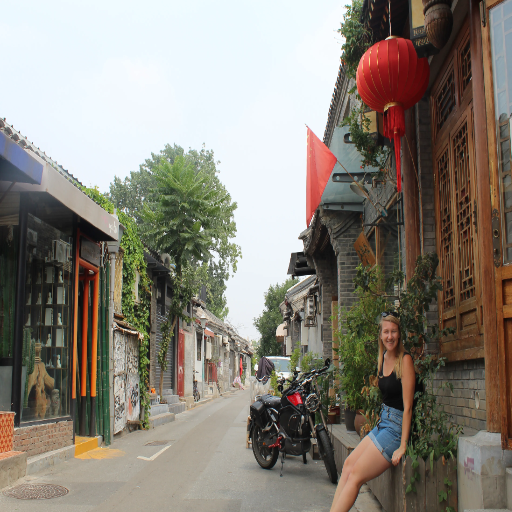
Nanluoguxiang Hutong: Shopping, Food, and Traditional Courtyard Homes
If you are looking for authentic Beijing culture within the city, then Nanluoguxiang Hutong is one of the most iconic and energetic places to visit. Traditional courtyard homes (siheyuan) and modern boutique stores combine beautifully, don’t you think? While strolling around the hutong, a range of street food stalls can be seen selling everything from delicious jianbing (a Chinese crepe) to sweet candied hawthorn skewers. If shopping is more your pace, explore the plethora of unique stores that offer handcrafted souvenirs, traditional clothes, and other fantastic items.
Culturally, this up-and-coming area, becoming increasingly popular with modern tourists, is a delightful mix of classic and contemporary. A more realistic take on the area involves less elegant terms, since from a Nanluoguxiang can be seen through the droplets of Chinatown’s history frozen in time-like domes of history. All you need to do is dig a little and uncover a world underneath, contrary to what it may look like. This region’s colonial feeling stems from the traditional silk architecture. Shutter curtains and windows adorned with lace and silk are suggested as their beauty is eyes gawking.
Exploring Houhai Area: Beijing’s Historic Lakes and Nightlife District
While visiting the Houhai Area, I appreciated its culture but also approached it with a certain level of technical detail. I find the historic lakes and immense nightlife fascinating from a photography perspective. To capture the area’s charm, I use an ultra-wide angle lens to capture the expansive lake and the surrounding willow trees. In addition, I must have a camera that has good low-light capabilities, such as a high ISO range and noise reduction, to capture the bars and restaurants illuminated at night. With these tools, I can truly capture the magic of Houhai day and night.
When planning a visit to Houhai, one must be conscious of the time. I prefer either the early mornings or weekdays to avoid the heavy tourist traffic, which obstructs the calming features of the area along with its architectural details. During the off-peak hours, I can focus on the lakes and the hutong courtyards without distractions. My setup changes when I plan to shoot at dusk or night to capture the vibrant nightlife. I bring a sturdy tripod to utilize long-exposure shots in those cases. This ensures sharp images and increases the vibrance of the light reflections on the lake. Determining such technical parameters is necessary to enjoy sharpened images that capture the excitement of nightlife’s hustle and bustle through experienced enjoyment.
Preparation and understanding of the various activities available at Houhai significantly improve the experience. As demonstrated by sampling local foods combined with traditional performances, cultural immersion allows for more technical planning while ensuring a fulfilling visit. While drifting along the peaceful lakeside or partaking in the exciting nightlife, Houhai offers an inspiring experience to capture modernity fused with history, all of which is enriching.
What Are the Best Things to Do in Beijing Beyond the Traditional Tourist Sites?
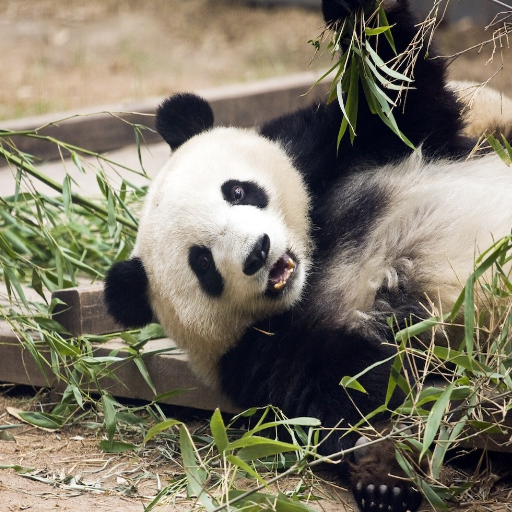
Discovering 798 Art District: Beijing’s Contemporary Art Gallery Scene
Captivated by the eclectic and vibrant area, I recall exploring the 798 Art District. The profoundly transformed 1950s factory complex now breathes contemporary creativity and artistry. The distinction of modern artistic expression amidst the industrial architecture makes it a hotspot for casual and serious tourists. While strolling through public places, galleries, and studios, I uncovered everything ranging from digital installations and paintings to sculptures. The astounding blend of tradition with modern creativity unwraps a new perspective on art in China.
If you plan to visit the 798 Art District, paying attention to some technical details can optimize the travel experience. The district tends to be extensive, so the right pair of shoes is necessary. A quality smartphone or high-res camera would be incredibly beneficial as the open spaces and art galleries capture endless moments through their lens. It would also be ideal to try coming on a weekday during the morning since the crowds are much smaller and you can interact with the exhibits freely. One of the most important considerations is to check the calendar for any temporary exhibitions or performances so you can plan your visit around them.
In addition to the galleries, 798 Art District has a variety of cafes, boutique shops, and other activities you can enjoy during your visit. I enjoyed the coffee shops here as they creatively combined art and food. To optimize your time, plan to spend at least half a day there. Also, some exhibitions have separate cover charges, so having a little cash and digital payment with you is a good idea. All in all, the time I spent at 798 Art District was invigorating, and it challenged my thinking to understand the cultural atmosphere of Beijing.
Beijing Opera Performances: Where to Experience Traditional Chinese Theater
Beijing Opera is certainly an incomplete experience for anyone intrigued by China’s drama. In my view, Liyuan Theater and the National Center for the Performing Arts had the most stunning performances. Liyuan Theater captures the pure intimacy of these art forms, while the National Center boasts a sleek, modern performance.
I recommend getting there quite some time to secure seats since enjoying the costumes and mesmerizing facial makeup depends on visibility. The venues utilize classic-style acoustics, which permits intense vocal techniques and traditional instruments to shine through for total spirit appreciation. Non-Mandarin speakers should be looking to see whether the theater provides translation or electronic subtitles. Such acts make the character and story comprehension a breeze. Also, some performances are highly renowned, so buying tickets well ahead of the date online is advisable.
Buddhist Traditions at Lama Temple: Beijing’s Most Magnificent Tibetan Temple
At the Lama Temple, I was welcomed by the calmness surrounding the site and the consolidation of Buddhist practices within the Temple. To better my understanding, I witnessed the rituals performed by worshippers, like the lighting of incense and offering gifts, which I learned are key aspects of Tibetan Buddhism. Other than that, I marked down detailed architectural works and colorful statues like the giant Maitreya Buddha statue, with many features carved from a chunk of sandalwood.
To those wishing to visit, it would be wise to search for the temple history in advance to give yourself a context. Comfortable walking shoes are a requirement, and be mindful that in some areas, there are photography rules. In addition, to act within the bounds of culture, it is suggested to wear clothing that hides the shoulders and knees.
Referring to readers who are more interested in the specific details related to the experience in the temple, here are a few concrete details that I deem helpful based on my visit:
Opening Hours: The temple is usually open daily from around 9 a.m. until 4 p.m.; therefore, take this into consideration when planning your trip.
Entry Fees: The fee for entry controls access to the temple grounds and currently is about 25CNY. However, like all these details, it’s subject to change.
Accessibility: Walking to some parts of the temple includes steep steps, which presents difficulty for the less mobile visitors.
Air Quality Monitors: People who are sensitive to air quality may need to wear masks, especially when incense is burned so frequently.
Being mindful of these considerations can help ensure that your visit to the Lama Temple is both rewarding and respectful of the heritage it stands for.
Where to Find the Best Peking Duck and Other Local Cuisine in Beijing?
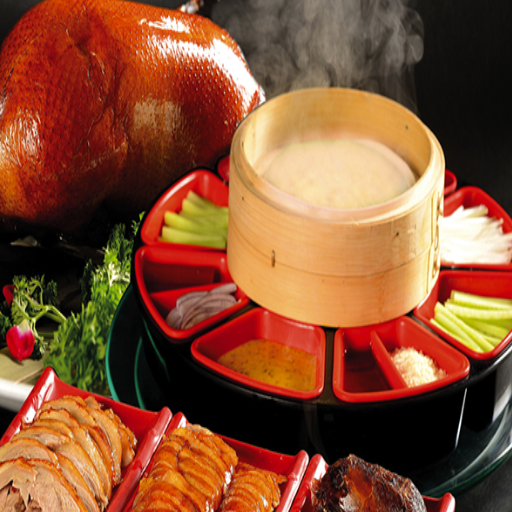
Top-Rated Peking Duck Restaurants from Traditional to Modern Interpretations
Quanjude Roast Duck Restaurant
Detail: Quanjude opened its doors in 1864 and is now synonymous with Peking Duck. The restaurant is famous for its traditional method of roasting ducks in an open-flame wood oven.
Highlight: Signature delicious and tender meat with thin pancakes, scallions, sweet bean sauce, and crispy skin.
Technical Parameters: The crispy outer layer and juicy inner portion of the duck are achieved by maintaining precise temperatures of around 225°C. It also undergoes a pre-cooking stage in which air inflation separates the skin for a more crispy texture.
Da Dong Roast Duck
Overview: Da Dong is equally renowned and infamous for overhauling the Peking duck by combining it with modern dining aesthetics. The definition and style of the dish, ‘da Dong Roast Duck,’ are just in their name.
Highlight: Their “superlean” roast duck is less rotund than the others but remarkably rich in flavor. The side dishes are artfully decorated.
Siji Minfu Roast Duck Restaurant
Overview: Authentic quality at a discount appeals to many tourists as well, which is why their slogan is “Everything for the common people.” That’s why Siji Minfu is such a local favorite.
Highlight: A hint of smoke and sweetness penetrates all meat roasted over a fruitwood fire. The service style blends casual and deeply traditional.
Made in China (Grand Hyatt Beijing)
Overview: This restaurant creates a new twist for international tourists by serving Peking duck with other specialized Northern Chinese methods. Its hallmark is an elegant draped decor perfect for formal dining.
Highlight: Duck Roasting is done at an open woodfire in full view of the guests. It imparts authentic flavors while demonstrating the best service quality, like serving in fine-dining restaurants.
Every single restaurant has a remarkable view of this dish, without hiding the amount of love they pour into their food while blending century-old traditions with impressive modern changes.
Beijing Night Markets: Street Food Adventures and Local Delicacies
Beijing’s night markets present one of the most interesting historical street-settled cultural experiences for tourists. Like many other places worldwide, Bejing has a particular flavor assortment in its night markets. While walking along these streets savoring a few exotic dishes like crispy, savory crepes, tender lamb skewers, and various other delicacies, one gets a better understanding of the rich culture of this city. Wangfujing Snack Street is one of the various renowned snack markets that offer traditional snacks and infused innovations like scorpion skewers, making the market ideal for daring food lovers.
Local masters take pride in their skills, which are often passed down through generations. Lamb skewers, known as chuan’r, are seasoned with cumin, chili powder, and sesame seeds before being grilled to perfection over open charcoal fires, providing an authentic approach. Street markets are also far less modern and utilize jianbing, a savory crepe, and traditional methods. This means cooking delicious food using highly skilled techniques. Skeldishoping steam leaves the perfect crispness and softness, making the meal mouth-watering.
These towns are more than just a culinary destination; they foster communal interaction. In Beijing, one can experience the fragrance of fresh produce being sizzled on the grill along with enthusiastic conversations; all these phenomena produce a unique, energetic environment. Like Wangfujing, other markets such as Donghuamen and Ghost Street (Guijie) are also a fusion of the old and the new, serving everything from stir-fried hot pots to pulled noodles. These night markets and other street markets present Beijing’s vibrant, rich, and diverse culinary culture that is ideal for both locals and tourists through the night.
What Hidden Gems in Beijing Are Often Missed by Tourists?
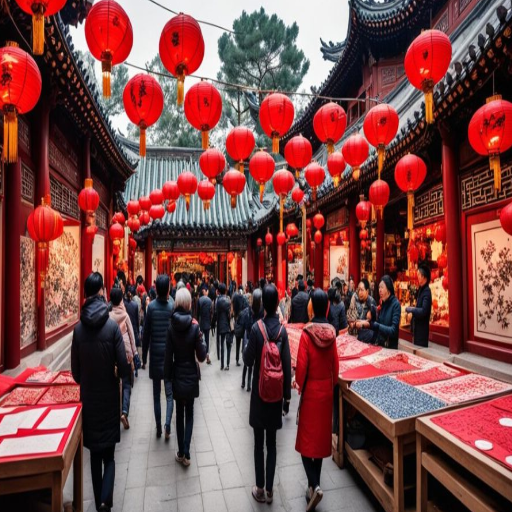
Jingshan Park: The Secret Spot for the Best Panoramic Views of the Forbidden City
Jingshan Park, lying immediately north of the Forbidden City, is one of Beijing’s hidden gems. It offers an exceptional view of the famous landmark. The park’s middle hill, which rises about 45.7 meters (150 feet) above work level, offers a remarkable view of the Forbidden City, its layout, and the surrounding city. This hill, built during the Yuan, Ming, and Qing dynasties from earth removed from the city’s moat, also has historical significance.
The optimal time to visit is during sunset or sunrise, when the light enhances the unmatched view of the golden rooftops of the Forbidden City. Tourists can reach The park easily as they do not require much time or money to enter. The entrance fees are only a couple of yuan, and there is no restriction on the time of season which can be visited. It is a very accessible and majestic jewel. These pathways, along with platforms for viewing from these points of view, help stressed individuals to see the heritage that Beijing provides calmly.
Lesser-Known Museums Beyond the National Museum of China
To gain a thorough and more personal appreciation of China’s multi-dimensional history, exploring its lesser-known museums, such as the Beijing Folklore Museum located at the Confucius Temple, gives insight into the fabric of its Folklore, culture, and Ideologies. The entrance fee is negligible and includes displays showcasing relics, family life, interactive artifacts, and ancient manuscripts and traditions.
Equally, if not more spectacular, is the Museum of Ancient Architecture, which is located close to Xiannongtan. This museum has intricate wooden drones and scale models of traditional Chinese building style, showcasing astounding craftsmanship and skill, in addition to diagrams. This site is particularly popular among tourists interested in architecture and its history, as well as those fascinated by artistic skills. Available guidance enables visitors to learn about the technical specifics of ancient construction techniques, like the use of mortise-and-tenon joints and elaborate beam systems that were crafted to last throughout time and endure natural catastrophes.
The China Numismatic Museum is located close to Tiananmen Square, making it more accessible to tourists. Its’ architectural style is historical and elegant. This museum specializes in relics icons, displaying currencies, banknotes, and numismatic items alongside ancient artifacts, sure to catch every coin collector’s attention. China’s economy, trade, and even monetary systems directly correlate with the country’s various dynasties. Each dynasty offers a stunning storyline that only adds to its history, making the museum a pleasant surprise for anyone ready to delve deeper into ancient China.
Every one of these museums enhances one’s understanding of Chinese culture while offering low-cost and easy ways to interact with history and culture, unlike the larger, more popular places, which tend to be overcrowded.
Beijing Without Crowds: When is the Best Time to Visit Popular Attractions
Timing is one of the main factors contributing to appreciating the grandeur of Beijing’s attractions. The peak tourist seasons in the summer and the holidays strongly affect the drop in pleasant weather and ease of access. Beijing is also relatively warmer throughout early spring and autumn (March to April, October to early November), and the number of tourists drops significantly during these times.
Recommended Times for Specific Attractions:
The Great Wall (for example, the Mutianyu section): A visit from 8-10 AM on a weekday will ensure that you avoid the mass tourists and enjoy your visit for a little longer. As mid-morning approaches, there will be a growing number of tourists.
The Forbidden City: Weekday mornings tend to be less busy. Avoid the weekends and public holidays such as the Golden Week (10-7 October).
Temple of Heaven: Group tours are most frequent in the mid-morning, so arriving early or late in the afternoon on weekdays is the best option.
Summer Palace: In mid- and late autumn, there are fewer tourists, combined with stunning autumn colors, making this my favorite time of year. I recommend visiting in the early morning or late afternoon of a weekday.
Additional Considerations:
Public Chinese holidays, such as ‘The Week of Golden’ (beginning of October), ‘Lunar New Year’ (the date is not fixed), and May Day (May 1st), are particularly dreaded due to heavy domestic travel and, subsequently, tourists.
Getting the Weather Report: Beijing’s summer months are marked by significant heat and high humidity, whereas winter is characterized by cold temperatures and blustery winds. Tourist numbers are comparatively lower through spring and autumn when the temperatures are moderate.
Booking Online: Some sites offer or mandate the purchase of tickets through the online platform, along with time slots for entry. Purchasing tickets in advance guarantees a higher likelihood of having a more pleasant experience.
Beijing is still a fascinating place to visit, but optimal planning around the aforementioned factors allows a greater appreciation of the city’s history and culture without feeling overwhelmed.
Frequently Asked Questions (FAQs)
Q: What is the most effective technique for visiting Beijing’s Summer Palace?
A: When visiting the Summer Palace in Beijing, set aside time during the day, ideally around 4 hours, for this UNESCO World Heritage site. Begin your walk at the East Palace Gate and head towards Kunming Lake, the largest water body in Summer Palace. Don’t forget to see the Long Corridor, the Marble Boat, and the Tower of Buddhist Incense. This Palace was constructed for Emperor Qianlong and was later favored as a retreat by Empress Dowager Cixi. For smooth visits, early morning would be ideal, particularly in summer. Hiring a guide is recommended to uncover the imperial history of one of Beijing’s most beautiful sites.
Q: What are the steps to travel from Beijing to the Great Wall of China?
A: Many sections regarding the Great Wall of China are available in and around Beijing. For most tourists, the Mutianyu Great Wall is survey-friendly as its segments are better preserved than Badaling. Join a group tour or get a private driver for the day (¥600-800 round trip). Leave around 7-8 am to avoid crowds and overbearing heat. Good walking shoes, water, and snacks are necessary, and you should dress appropriately for the weather. You should give yourself around 3-4 hours at the wall itself. If you have time, add other sites to your itinerary, like the Ming Tombs. Many tours in Beijing offer these astounding attractions together because it makes the transportation logistics more straightforward for the tours.
Q: What historical significance does Tiananmen Square have?
A: Tiananmen Square, also called Tiananmen, has great historical value as it is Beijing’s center hub or core and serves as a emblematic area within the People’s Republic of China. It is named after Tiananmen Gate, also known as the Gate of Heavenly Peace, which partitions the square from the Forbidden City. It is the most significant public square around the globe. During a few monumental motions in Chinese history, it was the place where the chairman of the country, Mao, announced the establishment of the People’s Republic of China in 1949, where currently his mausoleum exists. Along with the rest of China, the square has seen many political activities, most violent, over time, such as the protests of 1989. The Square also features The National Museum of China, The Great Hall of the People, and The Monument to the People’s Heroes. Therefore, Tiananmen Square was and continues to be a critical landmark in the history of modern China.
Q: What activities in Beijing are best for families with children?
A: Families on holiday in Beijing have many attractions to explore. Beijing Zoo is ideal for small children, especially when viewing giant pandas. For budding athletes, the Olympic Park built for the 2008 Beijing Olympic Games will be memorable for the towering structures and vast space available for playing. The Summer Palace has gorgeous landscaped gardens and boat rides on Taken Lake. The China Science and Technology Museum contains attractive displays, while the Happy Valley Amusement Park has educational shows, rides, and other fun activities. A less frequented section of the Great Wall, called Mutianyu, is where many people go. There is also a toboggan ride down the wall. The Beijing Aquarium and the Natural History Museum are also wonderful educational places that most people enjoy visiting during a trip to Beijing.
Q: What is a suitable itinerary for a week-long trip in Beijing?
A: For a one-week Beijing itinerary, structure your time as follows: Explore central Beijing on Day 1, starting with Tiananmen Square, and spend the rest of the day at the Forbidden City. On Day 2, head to the Summer Palace in the afternoon after visiting the Temple of Heaven in the morning. Schedule a day trip to the Mutianyu Great Wall of China and the Ming Tombs on Day 3. On Day 4, delve into local culture at the hutongs and stroll down Nanluoguxiang and Yandai Xiejie. On the fifth day, visit the Olympic Park, 798 Art District, and the National Museum. Take a break from the touristic places on Day 6 to visit the Lama Temple, a magnificent Buddhist temple, and the Confucius Temple. Market hopping at Panjiayuan Antique Market is a must on Day 7, where you can grab some souvenirs and savor some Peking duck for dinner. This optimized itinerary ought to captivate all types of travelers due to the plethora of landmarks, cultural activities, and the opportunity to experience modern-day Beijing.
Q: What is the optimal timeframe for visiting Beijing?
A: The optimal time to visit Beijing is spring (April-May) and autumn (September-October), when the temperatures are amicable for outdoor sightseeing. During these seasons, tourists can comfortably stroll through the Forbidden City and Summer Palace and partake in climbing the Great Wall of China. Autumn is terrific as tourists will find clear blue skies along with the colors of Fall. Summer (June-August) brings hot temperatures that exceed 30 degrees Celsius and heavy rainfall, although it’s still manageable for visiting most indoor sites. Winter (November-March) is known to be cold, with temperatures falling below freezing. Luckily, tourists will benefit from fewer tourists and an opportunity to witness the Great Wall in snow. The Spring Festival in January/February is festive, but most businesses shut down, and these attractions get busy with local tourism.
Q: In what ways do organized tours to Beijing differ from traveling on one’s own?
A: Participants in Beijing tours are provided with pre-arranged transportation and English-speaking guides who provide cultural and historical context. Also, sightseeing logistics are efficiently arranged so that tourists maximize their sightseeing time. This is particularly helpful for trips to the Great Wall of China and other outlying attractions with complex logistical travel arrangements. Many tours also seem to provide skip-the-line access to popular sites such as the Forbidden City. In contrast, independent travel allows tourists to explore the region surrounding their accommodation at any time, go off the beaten path, and experience local culture up close, which is usually less expensive. This is not uncommon with Beijing’s many travelers who tend to favor a mixed style – guided to complicated places like the Great Wall and free in the city’s central area, including famous Tiananmen Square, which can be easily found in guidebooks such as Lonely Planet. The choice of style should be based on the traveler’s willingness to deal with unfamiliar places and language barriers.
Q: What are some foods that must be tried when in Beijing?
A: If you visit Beijing, you will want to try the city’s specialty, Peking Duck (crispy duck served with thin pancakes, hoisin sauce, and scallions). Jianbing (savory crepes) makes for the perfect breakfast food. Sample dumplings (jiaozi) and hotpot from Beijing-style hotpot with copper pot divided for different broths. You can also try zhajiangmian (noodles with bean sauce), laguna (sticky rice rolls with sweet fillings), and street foods at Wangfujing Snack Street. For some Imperial cuisine influenced by the Ming Dynasty emperors, visit restaurants serving royal court dishes. A local specialty not to be missed is the donkey burger (lǘ ròu huǒshāo). Finish off with Beijing yogurt served in ceramic pots. To learn about Chinese food history and culture, try food tours, which are great ways to experience Beijing’s food scene.